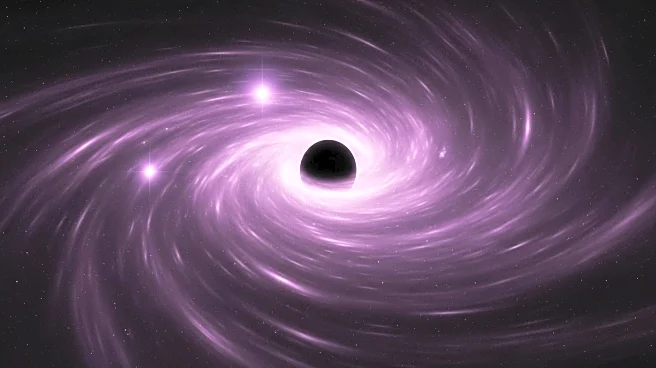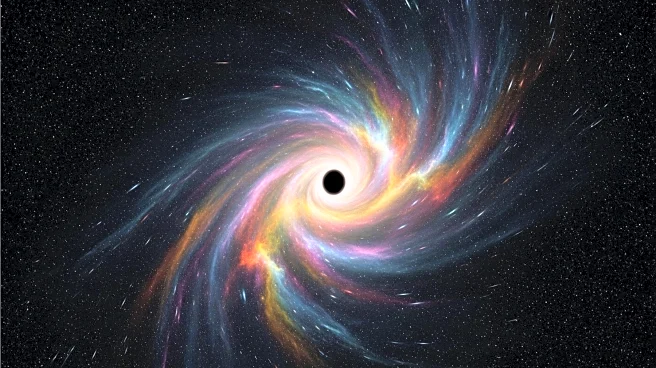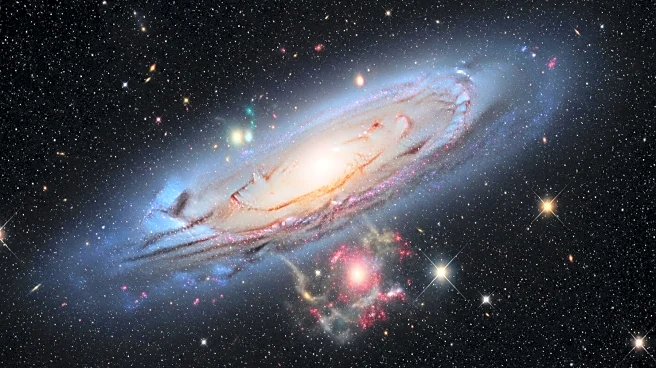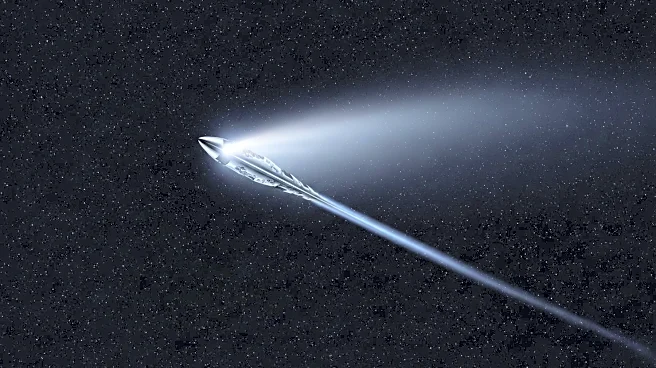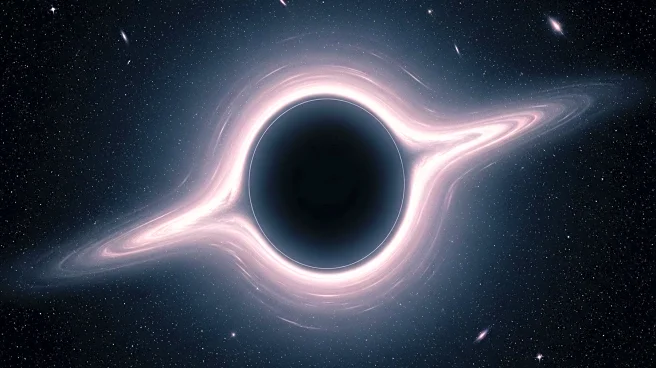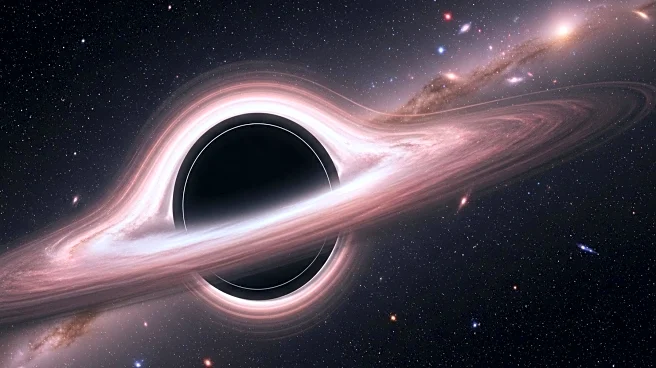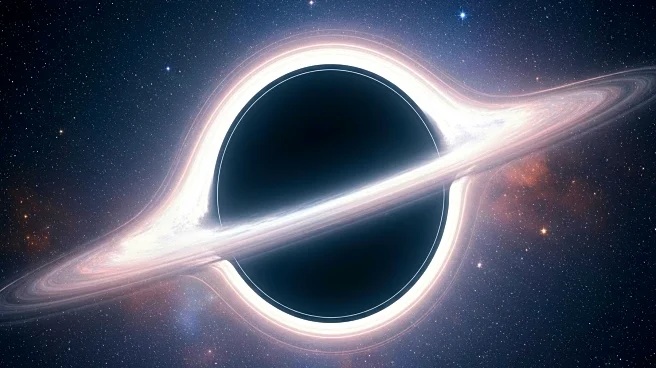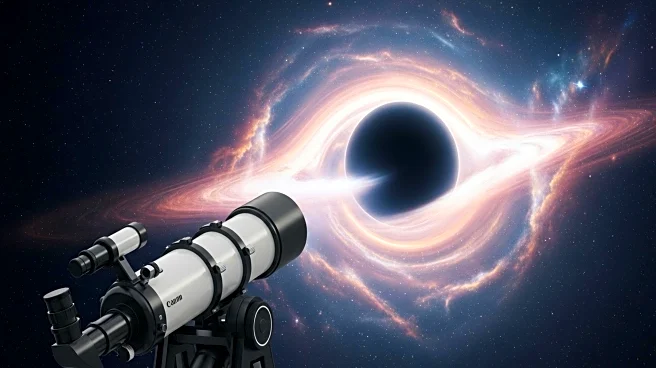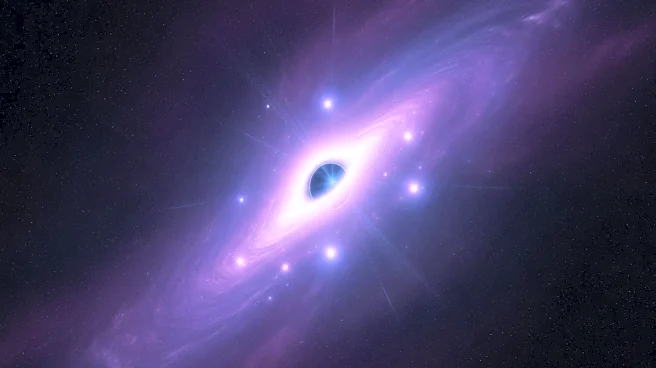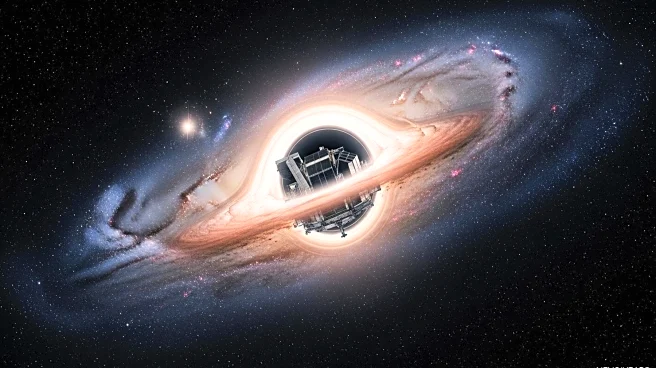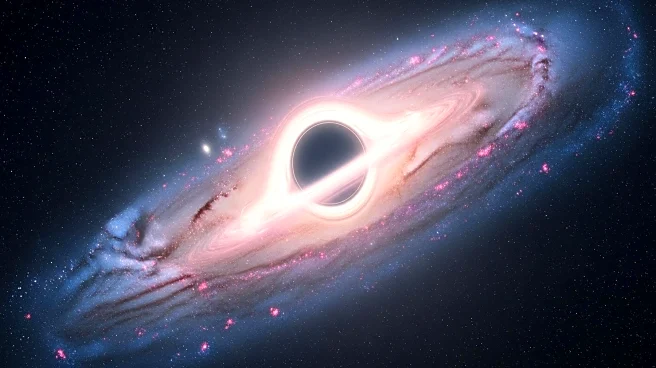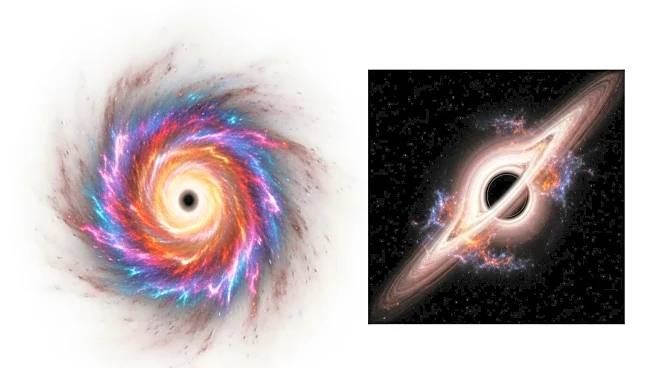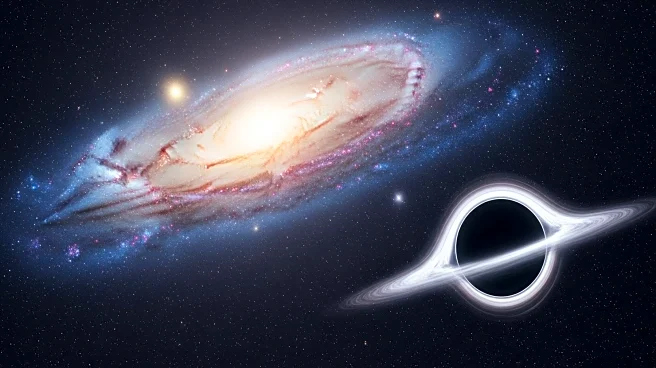What is the story about?
What's Happening?
Astronomers have discovered a supermassive black hole, RACS J0320-35, growing at 2.4 times the theoretical Eddington limit. This black hole, located in the early universe, is consuming matter at an unprecedented rate, challenging existing models of black hole growth. Using NASA's Chandra X-ray Observatory, researchers observed the black hole's rapid growth, which defies the expected limits based on its mass and radiation pressure. The discovery raises questions about how such black holes formed and grew so quickly after the Big Bang.
Why It's Important?
The discovery of a supermassive black hole growing beyond theoretical limits is significant for understanding the early universe and the formation of massive cosmic structures. This finding challenges current models of black hole growth and suggests that some black holes may have formed and evolved through previously unknown processes. Understanding these mechanisms could provide insights into the conditions of the early universe and the role of black holes in shaping cosmic evolution. The research also highlights the importance of advanced observational techniques in uncovering new cosmic phenomena.
What's Next?
Further research will focus on exploring the mechanisms that allow supermassive black holes to grow beyond theoretical limits. Scientists will use advanced simulations and observations to investigate the conditions that enable such rapid growth. These efforts may lead to new models of black hole formation and evolution, enhancing our understanding of the universe's history. The findings could also inform future observations and missions aimed at studying similar cosmic phenomena and their impact on the universe.
AI Generated Content
Do you find this article useful?
